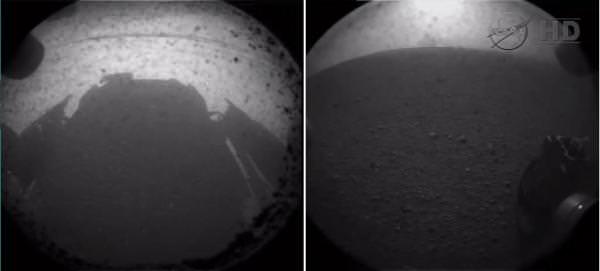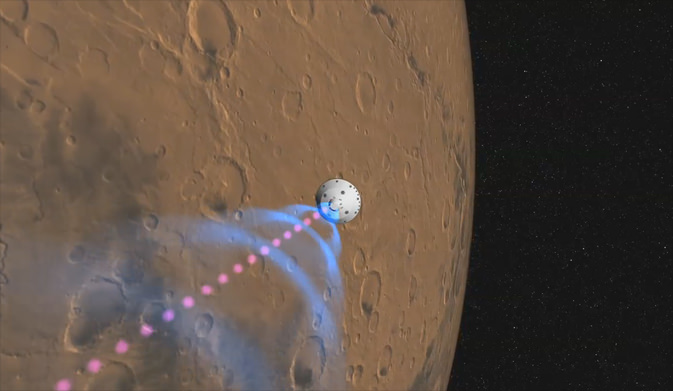Image Caption: This image shows one of the first views from NASA’s Curiosity rover, which landed on Mars the evening of Aug. 5 PDT (early morning hours Aug. 6 EDT). It was taken through a “fisheye” wide-angle lens on one of the rover’s Hazard-Avoidance cameras. These engineering cameras are located at the rover’s base. As planned, the early images are lower resolution. Credit: NASA/JPL-Caltech
“Welcome to Mars,” said Charles Elachi, Director of the Jet Propulsion Laboratory, Pasadena, Calif., following the dramatic and successful touchdown of Curiosity on the Red Planet at 1:32 AM EDT Aug. 6 (10:32 PM Aug 5). “Tonight was a great drama. We did the landing. Tomorrow we start exploring Mars and make new discoveries every day. Our Curiosity has no limits and we will explore the solar system.”
Tumultuous and long lasting jubilation erupted at Mission Control at JPL when the spectacular pinpoint landing success was announced and continued during the post landing news briefing at JPL.
NASA’s Curiosity Mars Science Lab (MSL) safely survived the harrowing plunge and nail biting descent through the Martian atmosphere known as the “7 minutes of Terror”. After hitting the thin atmosphere at 13,200 MPH (5,900 m/s), the robot perfectly executed the unprecedented entry, descent and landing (EDL) sequence utilizing a rocket powered guided descent, supersonic parachutes and then culminating in the never before tried “sky crane maneuver” and helicopter-like touch down at 0 MPH barely 7 minutes later.
Curiosity landed near the foot of a layered mountain three miles (5 km) tall and 96 miles(154 km) in diameter inside Gale Crater which may once have contained a lake. She relayed a few initial thumbnail pictures within minutes after touchdown via NASA’s Mars Odyssey orbiter.
Larger images showing the Gale crater rim were sent back during the 2nd Odyssey over flight about 2 hours later. Many higher resolution images will be transmitted back to Earth in the coming days including the first 360 degree panorama.
“Curiosity’s landing site is beginning to come into focus,” said John Grotzinger, project manager of NASA’s Mars Science Laboratory mission, at the California Institute of Technology in Pasadena. “In the image (above), we are looking to the northwest. What you see on the horizon is the rim of Gale Crater. In the foreground, you can see a gravel field. The question is, where does this gravel come from? It is the first of what will be many scientific questions to come from our new home on Mars.”
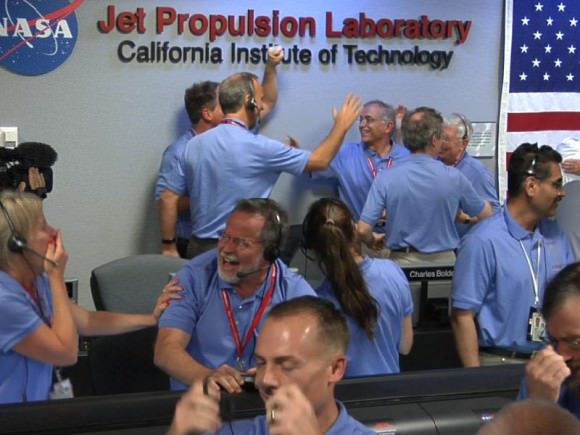
Image Caption: Cheers for Curiosity – Engineers at NASA’s Jet Propulsion Laboratory in Pasadena, Calif., celebrate the landing of NASA’s Curiosity rover on the Red Planet. The rover touched down on Mars the evening of Aug. 5 PDT (morning of Aug. 6 EDT). Image credit: NASA/JPL-Caltech
“Long live American Curiosity”, said John Holdren, science advisor to President Obama. “Today on Mars, history was made on Earth. It will stand as an American point of pride far in the future. I want to congratulate the team on behalf of President Obama. Landing Curiosity was the most challenging mission ever attempted in robotic planetary exploration. This 1 ton automobile sized piece of American ingenuity on Mars should put to rest any doubts about American space leadership. Even the longest odds are no match for our gutsy determination.”
Curiosity traveled for over 8 months and more than 352-million-mile (567-million-kilometer) to arrive at Mars since launching from Earth in Nov. 2011.
“Today, the wheels of Curiosity have begun to blaze the trail for human footprints on Mars. Curiosity, the most sophisticated rover ever built, is now on the surface of the Red Planet, where it will seek to answer age-old questions about whether life ever existed on Mars — or if the planet can sustain life in the future,” said NASA Administrator Charles Bolden.
“This is an amazing achievement, made possible by a team of scientists and engineers from around the world and led by the extraordinary men and women of NASA and our Jet Propulsion Laboratory. President Obama has laid out a bold vision for sending humans to Mars in the mid-2030’s, and today’s landing marks a significant step toward achieving this goal.”
“What a fantastic demonstration of what our nation can accomplish. Thank you team. I am so proud of you. And what an inspiration to our young people. Nothing is harder than landing on Mars. Our leadership will make this world better.”
Curiosity is a 10 foot long (3 m) car-sized robotic geologist. The 1 ton behemoth is a roving chemistry lab with 10 state-of-the-art science instruments that will collect and analyze soil and rock samples and zap rocks from a distance with a laser to search for carbon in the form of organic molecules – the building blocks of life.
![PIA14294_Sumner1_curiosity_landing_site[1]](https://www.universetoday.com/wp-content/uploads/2012/08/PIA14294_Sumner1_curiosity_landing_site1-580x326.jpg)
Image Caption: Gale Crater landing site for Curiosity beside layered Martian mountain with landing ellipse. Credit: NASA
“On behalf of the 400 members of the science team we thank everybody involved in this enterprise the landing team,” said John Grotzinger, the MSL Project Scientist of the California Institute of Technology. “There is no greater inspiration to school kids than going to Mars. The cost of MSL for each American is the cost of a movie. That’s a movie I want to see.”
During a 2 year prime mission, she will search for evidence of habitats that could preserve signs of Martian microbial life. She will rove the crater floor seeking evidence of water related phyllosilicates and sulfates and eventually climb up the nearby mountain, nicknamed Mount Sharp.
Ken Kremer
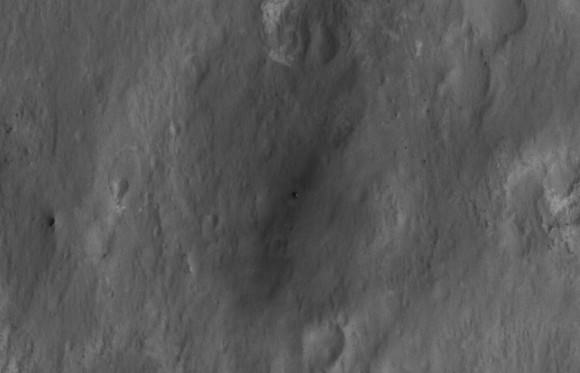
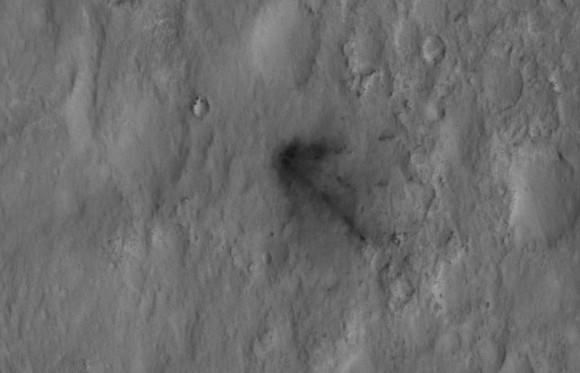
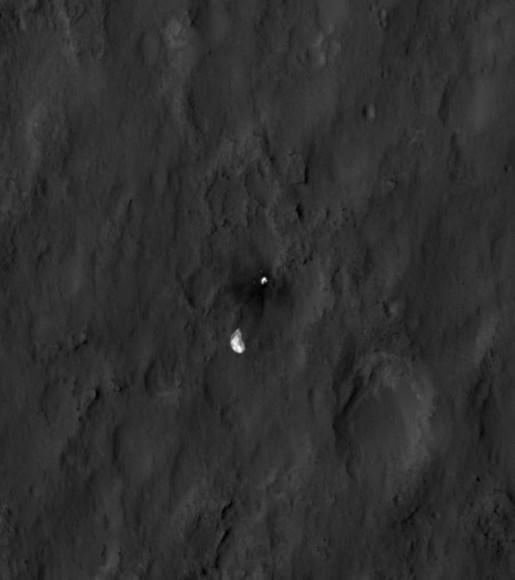
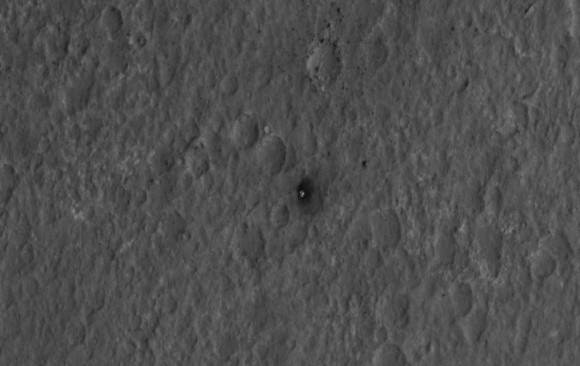

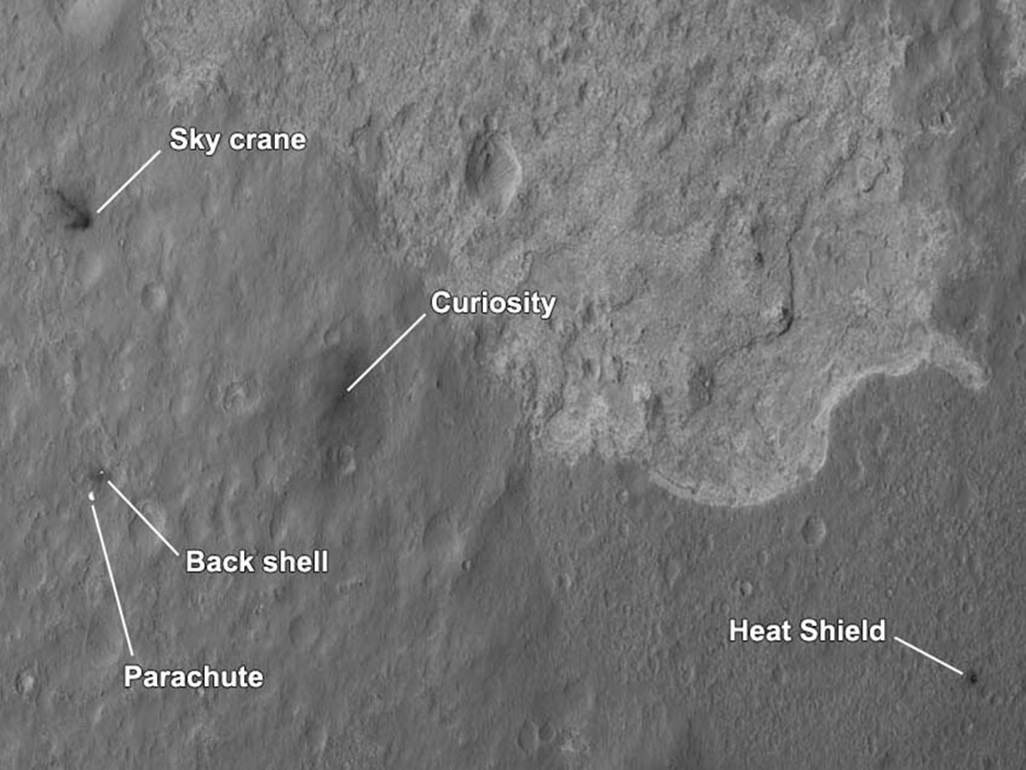
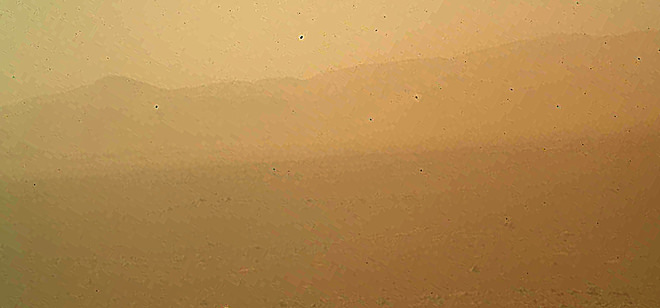
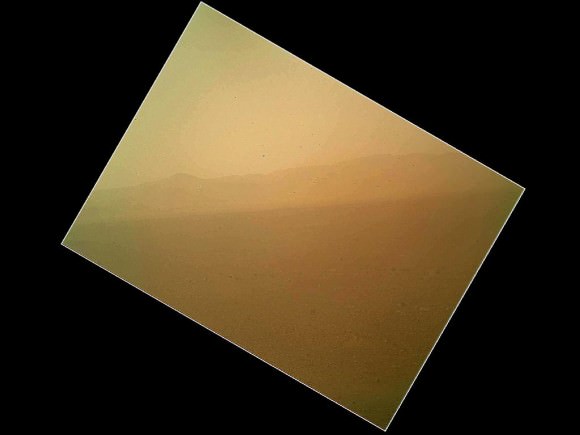
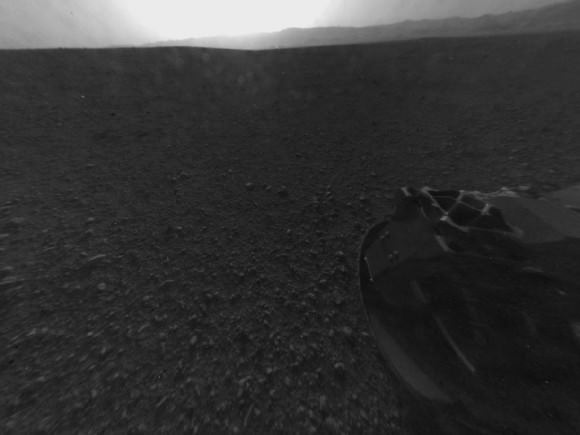
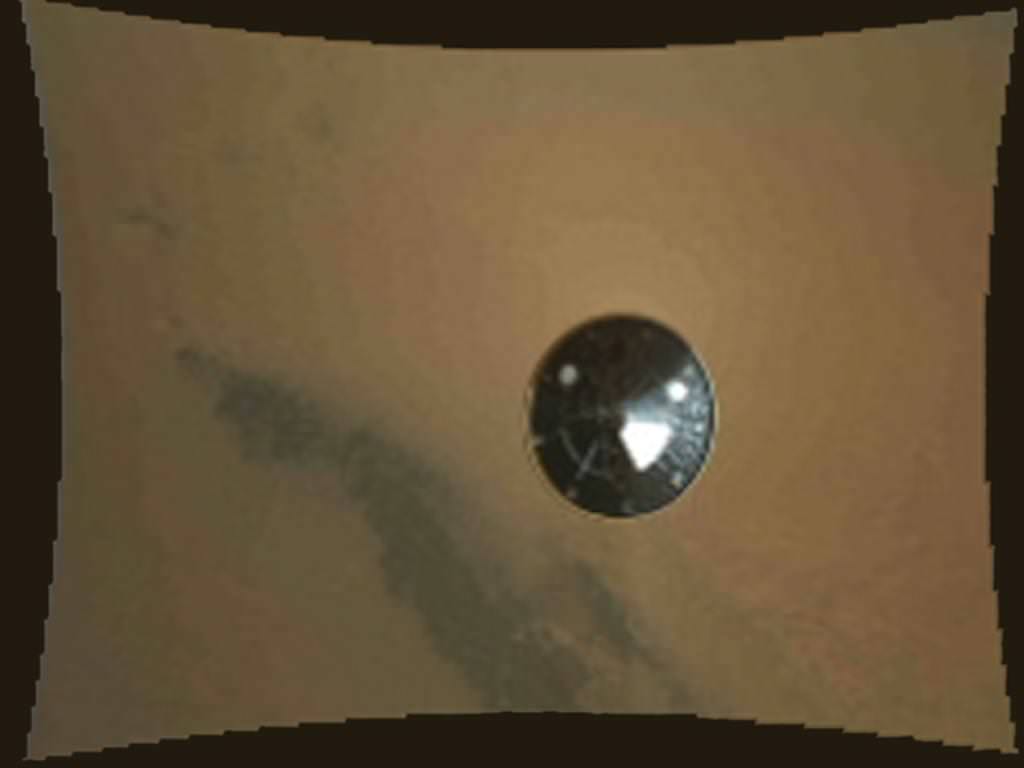
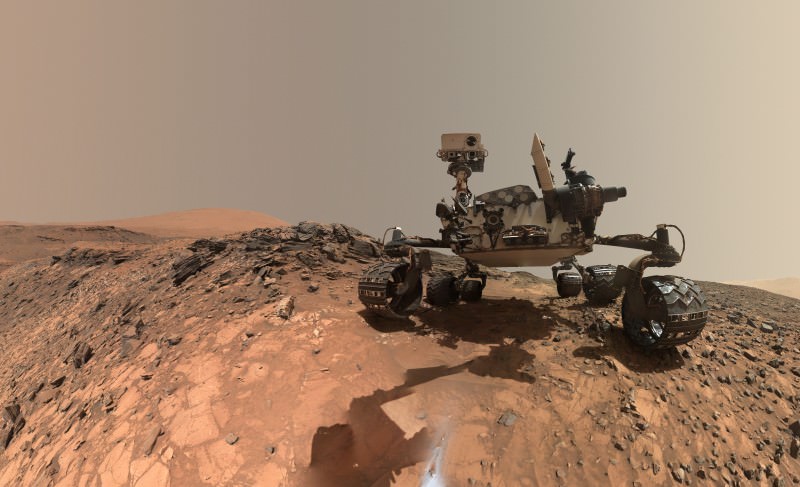
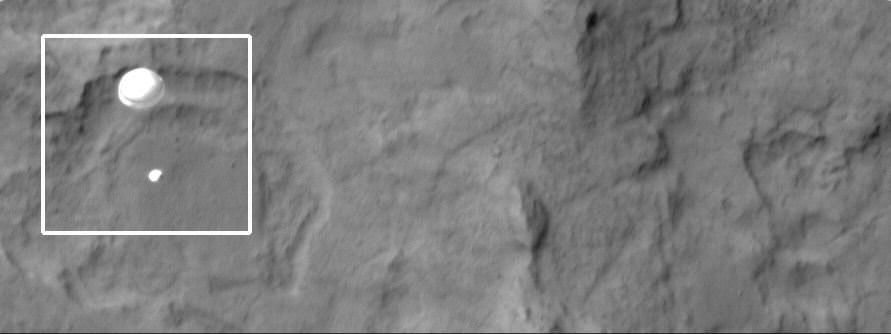
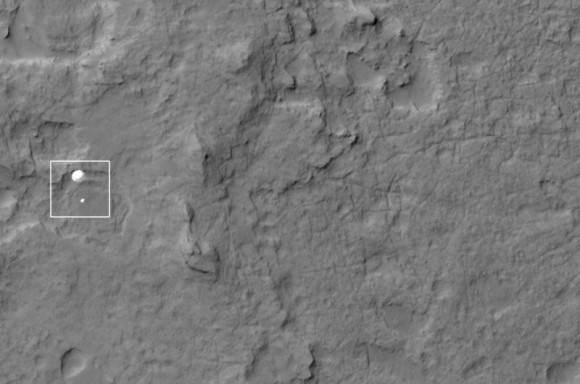
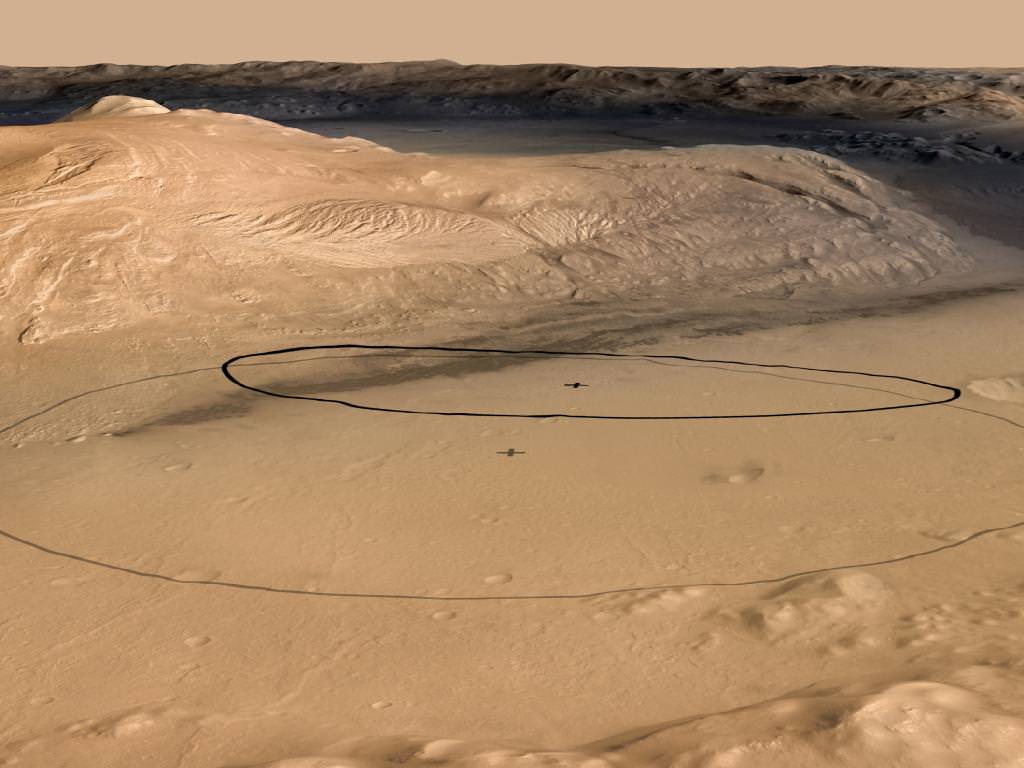
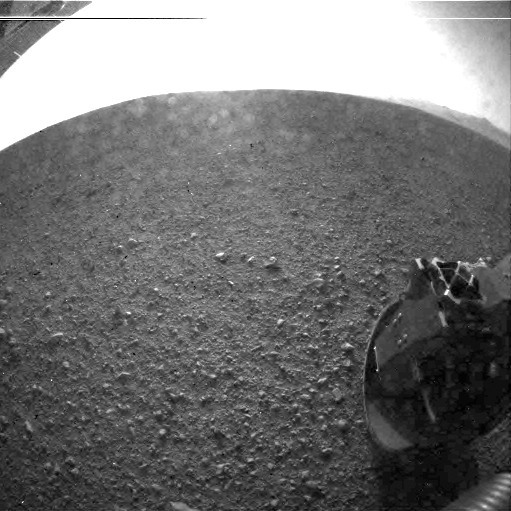

![PIA14294_Sumner1_curiosity_landing_site[1]](https://www.universetoday.com/wp-content/uploads/2012/08/PIA14294_Sumner1_curiosity_landing_site1-580x326.jpg)
